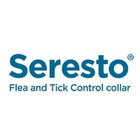What Is Walking Dandruff?
Walking dandruff is caused by Cheyletiella mites, tiny parasites on a dog’s skin and hair. These mites feed on skin cells and cause excessive flaking and itching. As they move under the flakes, it creates the illusion of "dandruff that walks."
The most common species affecting dogs is Cheyletiella yasguri, but cats and rabbits can also carry related mites. This condition spreads rapidly in crowded environments like kennels, pet boarding centers, and grooming salons.
Symptoms of Walking Dandruff in Dogs
Look out for these common signs of walking dandruff:
- White, dandruff-like flakes on your dog’s skin
- Visible movement of mites on the back or neck
- Constant scratching, biting, or rubbing
- Red, swollen, or irritated skin
- Patchy hair loss or scabs
- Small red bumps or rash, especially in humans sharing space with infected pets
Types of Mites That Affect Dogs:
- Cheyletiella yasguri: Causes flaking and itching on the back; can spread to humans
- Demodex canis: Usually harmless unless the immune system is weak
- Otodectes cynotis (ear mites): Often found in cats, but can affect dog's ears
How Do Dogs Get Walking Dandruff?
Cheyletiella mites are highly contagious and spread through direct contact or shared items like brushes and bedding. They live on your pet but can survive up to 10 days in the environment, making reinfection possible.
Walking dandruff is also a zoonotic condition which can be transmitted from pets to people. While humans are not the mites’ preferred host, they may develop itchy red bumps that usually go away after treating the infected pet.
Diagnosing Walking Dandruff
When you visit the vet, they may notice the mites moving on your dog’s skin. Additional tests may include:
- Flea comb or tape test to collect mites
- Skin scraping examined under a microscope
- Cutaneous cytology to confirm mite species and infestation level
Early diagnosis ensures faster recovery and reduces the risk of spreading to other pets or people.
Treatment Options for Walking Dandruff
Topical Treatments:
- Lime sulfur dips (available at some vet clinics)
- Revolution (selamectin) – a spot-on treatment
- Frontline Plus (fipronil) – available in spray and spot-on form
Oral Medications:
🐾 You can buy these treatments at discounted prices on our site. Check out our flea and tick collection.
Environmental Cleanup:
- Wash pet bedding with hot water and detergent
- Vacuum floors and furniture
- Use a flea and mite spray approved for home use
Important: Treat all pets in the household—even if they don’t show symptoms. Some animals may carry the mites without any visible signs.
Recovery & Aftercare
Most dogs respond well to treatment, with visible improvement in 2–3 weeks. However, reinfection is likely if the entire household (including other pets) and the environment are not appropriately treated.
Pets are typically no longer contagious after 3 weeks of consistent treatment. Continue the entire course as directed by your vet.
Prevention Tips
To reduce your dog’s risk of walking dandruff:
- Use a monthly flea and tick preventive like Revolution or Frontline Plus
- Avoid overcrowded or unsanitary grooming/boarding facilities
- Regularly wash pet bedding and clean your home
- Keep all pets up to date on parasite control
Final Thoughts
Walking dandruff might look like simple dry skin, but it seriously affects your pet’s comfort and health. Your dog can recover quickly and stay mite-free with prompt treatment and proper hygiene. Always consult your vet for the right diagnosis and treatment plan.







